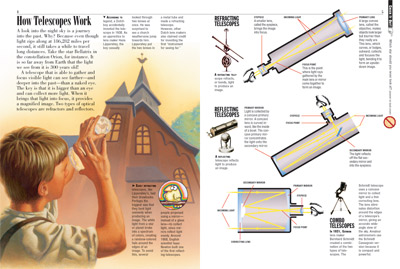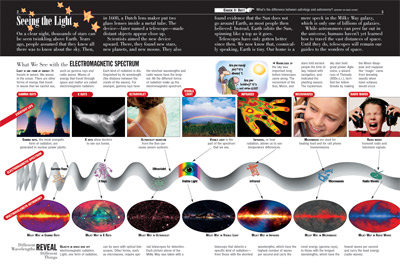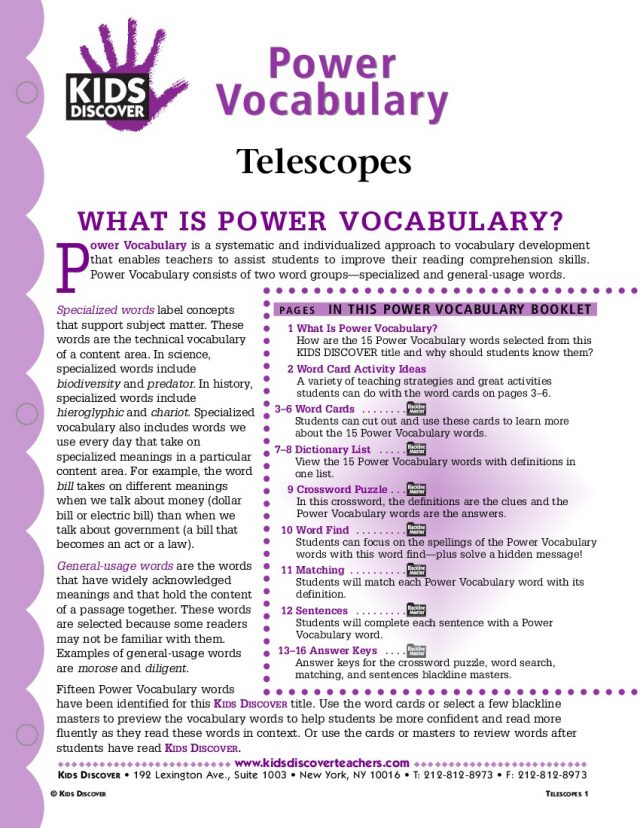Get digital access to this title and hundreds more with a Kids Discover Online subscription.
Get digital access to this title and hundreds more with a Kids Discover Online subscription.
Telescopes
The twinkling stars that have been a source of wonder to humans for centuries come into sharp focus through the use of everyday telescopes, but with specially built ones, scientists can detect a whole other universe of light waves. In Telescopes, kids are introduced to the electromagnetic spectrum, which includes the gamma rays generated in nuclear power plants and the radio waves that transmit TV signals. Compare refracting and reflecting telescopes, then see them in action in some of the largest structures on Earth, such as the VLA (Very Large Array), which is 22 miles square. But Earth is not the only place you’ll find telescopes; for kids obsessed with Space, coverage of the Hubble Telescope, which has confirmed the existence of black holes, and the finds of other space telescopes will impress to no end.
Far from being focused just on distant planets and stars, radio telescopes like SETI (Search for Extraterrestrial Intelligence) lead efforts to locate other forms of life, while infrared telescopes can tell us when the next big meteorite is likely to crash into Earth. Lastly, a section on how to become an amateur astronomer using common telescopes, for kids, will have them hurrying to the hobby store to price one of these amazing instruments.









